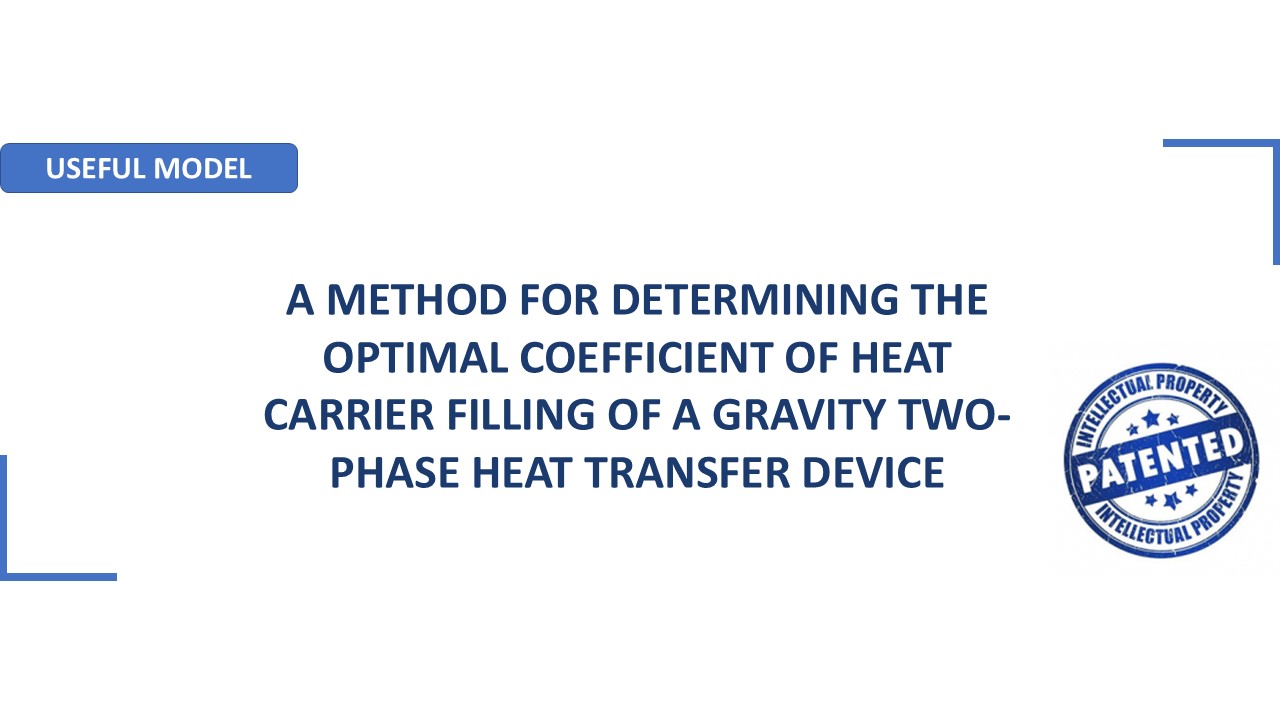A method for determining the optimal heat transfer coefficient of a gravity two-phase heat transfer device, wherein the cavity of the two-phase heat transfer device is vacuumed using a vacuum pump to remove non-condensable gas, filled alternately with a predetermined volume of heat transfer medium, and the thermal resistance of the two-phase heat transfer device is determined experimentally at different filling factors, while changing the filling factor relative to the internal volume of the heating section provides First, the maximum specified volume of coolant corresponding to the maximum specified value of the filling factor is filled into the two-phase heat transfer device, and the filling factor is changed from the maximum specified value to the minimum after the experimental determination of its thermal resistance by draining and blocking each time a part of the coolant corresponding to the step of changing the filling factor into a measuring container with divisions corresponding to the step of the filling factor. As a measuring vessel, a measuring tube made of the same material as the body of the two-phase heat transfer device is used, hermetically connected with vacuum density at one end to its cooling section and at the other end to a short filling tube, the inner diameter D [m] of the measuring tube is determined from the ratio: D>2 /(g( l- v))]0.5, where is the surface tension coefficient [N/m], g is the acceleration of gravity [m/s2], l and v are the densities of the coolant in the liquid and vapor phases, respectively, [kg/m3] at a given saturation temperature in the operating mode of the two-phase heat transfer device, and its length L [m] is determined from the ratio: L>4Vmax/ D2+a n, where Vmax is the value of the coolant volume in the two-phase heat transfer device at the maximum specified filling factor [m3], a is the width of the pinch point [m], n is the number of pinch points [pcs. ], the creation of a vacuum in the cavity of the two-phase heat transfer device is carried out only once, before filling it with the maximum volume of coolant Vmax, to drain each portion of the coolant into the measuring tube, the two-phase heat transfer device is turned over with the measuring tube down, and after draining all the coolant into it, the first portion of the coolant is blocked in it by squeezing the measuring tube on the first division from the bottom to a thickness that is less than double the wall thickness, thus blocking the first portion of the coolant in the section of the measuring tube located below the place of compression, turn the gravity two-phase heat transfer device to its original position and, after the next experimental determination of the thermal resistance, repeat the procedures for blocking other portions of the coolant in new sections of the measuring tube and experimental determination of the thermal resistance.


